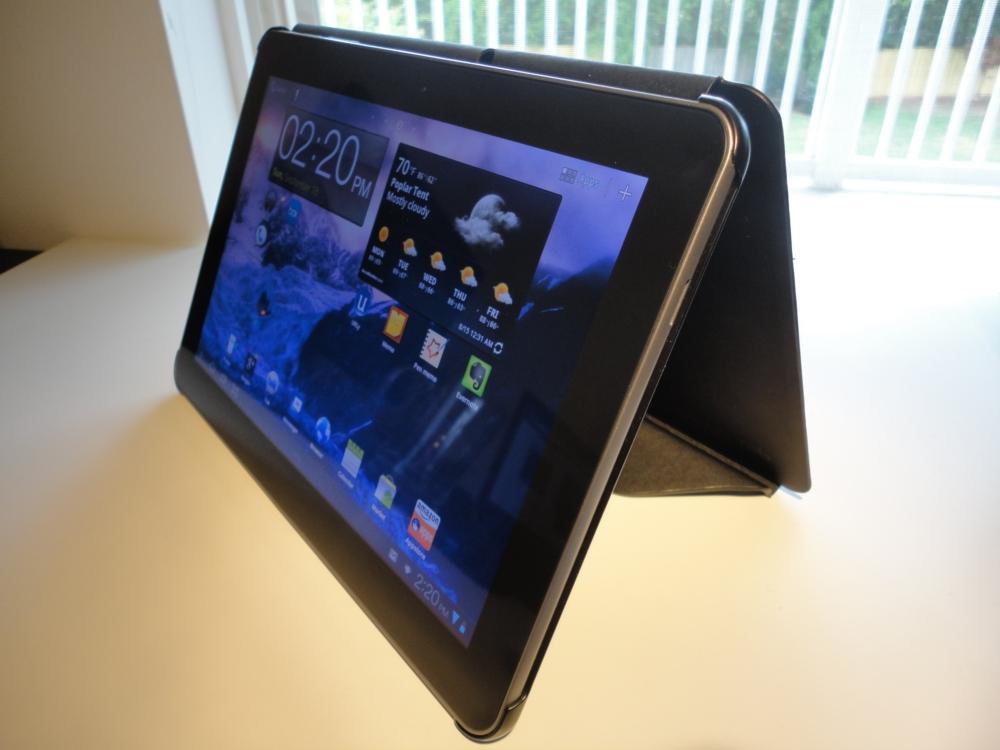
Tablets were reintroduced to the world in a smaller, more streamlined and modern package last year. Since then, the market has been rapidly growing and the devices themselves have quickly become common household items that fit perfectly in the blank space between smartphone and PC. Despite limited functionality, a tablet can serve as an essential business tool, a helpful school companion and the perfect multimedia consumption device. But there is something missing.
A 7- or 10-inch slab, though extremely portable and versatile, can be unwieldy at times. This generally isn't a problem when tapping out an email with a thumb keyboard, playing games or doing essentially anything where you are constantly interacting with the device. But a lot of the time holding a slab can become tiring or outright annoying. For instance, when watching a two-hour movie on Netflix. The first 30 minutes or so aren't that bad. But who wants to hold a tablet in midair for two or more hours? This begs the question: why do these things not come with built-in kickstands?
This smacked me in the face while I was writing on Friday about the future of gesture technology in tablets and phones. The picture shown here is a screen capture from a video demonstrating how gesture technology might work in the coming years. The guy enters his kitchen and sits at the table, only to prop his Galaxy Tab against the lid of a butter dish. Facepalm.

It seems like a silly question at first. And of course, the rebuttal is that cases usually include some sort of stand. But a case isn't always the best solution. One, because if you're not using an iPad, case selections are dreadfully thin. Also because I have bought several cases for every tablet I have ever owned – save for the ASUS Transformer. Only one or two of said cases have worked as intended.
The case pictured above is a prime example. It is the Samsung-made case for the Galaxy Tab 10.1, which, in it's own defense, is fairly functional for its minimalistic design. The inside coating of the case is rubberized and the bottom edge has two rubber feet for grip. The magnetic clasp when flipped to its back side exposes the rubberized coating and gives the case quite a bit of grip. This allows you to prop the tablet at nearly any angle, so long as there is friction. The problem? If the inside of the case gets dirty at all (which it does all the time because it attracts crumbs, dust and pretty much everything else) or the surface is remotely slick, the tablet will fall flat with the slightest touch. You can also flip the tablet upside down and place the magnetic clasp into a fitted notch, but even that slips out and the tablet falls quite easily.
My explanation probably doesn't help a lot, but that's not really the point. The point is, I bought yet another case for one of my tablets and it doesn't exactly work as it should. And buyers should not have to rely on case manufacturers to get a functionality out of their tablet that should be included. I did have one tablet back in the day, the Archos 5 Internet Tablet, and it was great. (Gasp! There were Android tablets before the iPad.) Even some smartphones come equipped with kickstands – which I find a bit unnecessary. But no current tablets come with a kickstand? It just doesn't make any sense to me at all.
The Windows 8 demo from This is my next displayed a Samsung-made tablet that was fitted into a slim dock. I'm not sure if that would be an add-on accessory from Samsung, or if it was just being used for the demonstration at BUILD, but if nothing else, OEMs should at least explore an option like this. It isn't a kick-stand but it works and it's better than nothing.
What say you guys? Have you ever wished your tablet came with a built-in kickstand? Or do you feel that manufacturers would skimp on kickstands like they do in smartphones and that they would be useless? Has any particular case worked for you instead?